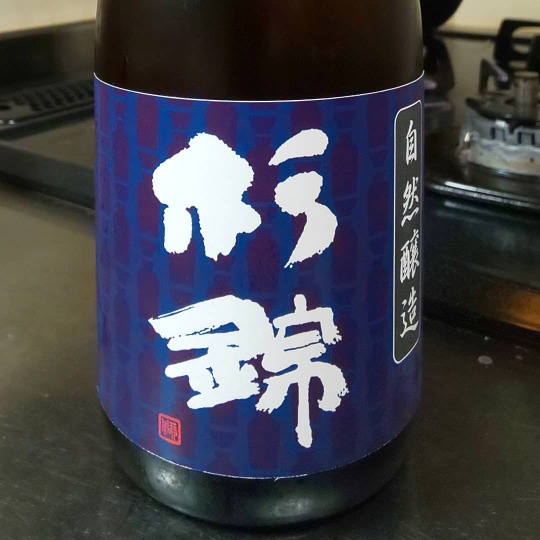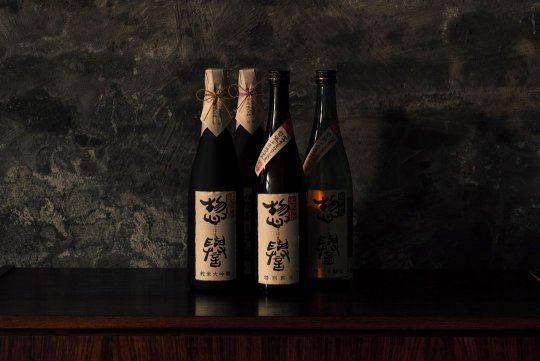#nihonshudo
Explore tagged Tumblr posts
Text
Karakuchi (辛口) is one of the more bizarre terms in the Japanese culinary lexicon.
The characters literally mean "pungent" and "mouth", so the first meaning isn't too tough to puzzle out: karakuchi is how the Japanese refer to spicy hot food, like Japanese curry rice or kimchi. This can even be modified, so that chûkara (中辛) is middling hot and chôkara (超辛) is super spicy.
The older connotation of karakuchi, however, means not spicy but simply salty; the chili pepper is, after all, still a very new ingredient in Japanese cuisine. But this usage is a little obsolete and is now usually spelled out in full as shiokarai (塩辛い), "salt-hot"); this is how that infamous dish of pickled squid guts, shiokara, got its name.
Hopping yet further on the association trail, things that are salted tend to be dry, and that's why in the context of the world of sake karakuchi means neither spicy nor salty, but simply not sweet. For the technically minded among the audience, dryness in sake is measured with nihonshudo (specific gravity) and rated so that +2 is yaya karakuchi (somewhat dry) and +6 and above is karakuchi (dry).
0 notes
Photo

Class is back in session. My part 2 of Sake is now on the website and YouTube. Hit the linktree in the bio. #Ibaraki #Konteki #IshiokaBrewery #Ishioka #Higashiyama #Miyashita #HigashiyamaBrewery #MiyashitaSakeBrewery #MightyPeak #PearlsofSimplicity #VineConnections #sake #koji #Japan #YamadaNishiki #multipleparallelfermentation #Aspergillusoryzae #Nigori #Nigorizake #SakeMeterValue #SMV #Nihonshudo #seimaibuai #Sando #San-do #tokkuri #masu #sakebomb #sugitama #sakereview https://www.instagram.com/p/COTFFhDLwbC/?igshid=j35cx7bvh5jq
#ibaraki#konteki#ishiokabrewery#ishioka#higashiyama#miyashita#higashiyamabrewery#miyashitasakebrewery#mightypeak#pearlsofsimplicity#vineconnections#sake#koji#japan#yamadanishiki#multipleparallelfermentation#aspergillusoryzae#nigori#nigorizake#sakemetervalue#smv#nihonshudo#seimaibuai#sando#san#tokkuri#masu#sakebomb#sugitama#sakereview
0 notes
Photo

Suginishiki shizenjōzō kimoto junmai Sugii-shuzō, Fujieda-shi Shizuoka I saw this on the brewery's instagram and just had to try it. Made with only naturally-occurring yeast and aged for 3 years, it's not a type I usually go for, but lately I've been trying to get into aged sake. The measurements on this are worth mentioning: rice polishing 50% ABV 11-12% (very low) nihonshudo -11 (much residual sugar) acidity 3.6 (lots of organic and amino acid) Though this would typically be drunk warm, the brewery suggests chilled, so I drank it about 15-18C. Clear and a rich gold color. Aromas of pickled plum, sourdough, sour apple, and tomato. Mild sweetness on the tip of the tongue with a spreading umami and acidity throughout the mouth. Unusual sour apple flavors in the finish, long and lingering but not unpleasant because of the refreshing acidity. Paired well with a Thai style coconut curry on rice. A unique nihonshu with a muscular presence that would maybe be an acquired taste for most. 9🍶/10 #japan #japanesesake #nihonshu #saketasting #tastingnotes #sakereviews #junmai #kimoto #suginishiki #fujieda #shizuoka #日本酒 #純米 #生もと #熟酒 #杉錦 #藤枝市 #静岡県 (at 杉井酒造有限会社) https://www.instagram.com/p/CE1lnFJA5k5/?igshid=1qruf59hifxt6
#japan#japanesesake#nihonshu#saketasting#tastingnotes#sakereviews#junmai#kimoto#suginishiki#fujieda#shizuoka#日本酒#純米#生もと#熟酒#杉錦#藤枝市#静岡県
0 notes
Text
How To Buy Japanese Sake? Check The Following Tips And Share.

Nihonshu – the Japanese National Drink. This name isn’t so popular as “Sake” in other countries. Spectacular in taste and mind-blowing in varieties, this incredible drink may let you forget about the elegance of Cabernet Sauvignon and Merlot.
Despite all the goods in the bottle, the Sake culture isn’t spreading too fast as it should. Thanks to a few companies who are working industriously in different countries to incorporate the Japanese Sake culture into theirs. With the availability in wine bottle shops, it doesn’t make it simple for you, and nor does the online Sake shops.
The “How To Buy” Tips for You
Breweries are credited for making different grades of Sakes and you need to identify them. Two things – milling rate and ingredients – decide the grade of a Sake. So, if your Sake has distilled alcohol, then it’s a premium Sake or Junmai. If it doesn’t, then it is Non-Junmai, which may contain added sugars, flavors, and organic acids.
Understanding different Sake types is another challenge for you. Remember, it is completely different from Sake grades and may overlap with each other. Nigori, Namakaze, Genshu, Muroku, Yamahai and Kōshu are famous Sake types that you would typically find at a Japansk sake store.
Check and read the label to find information regarding Sake acidity and Sake Meter Value (Nihonshudo) that would help you understand the acidic nature and the sharpness of the drink. Even if you’re buying it online, you can request to learn about the storage. There’s a possibility that an aged drink may leave you disappointed on account of its taste. Thus, check for reliable details online.
0 notes
Photo

Denshin "haru" 🌸 春 Junmai Ginjo Nama: Nihonshudo +1.5, about $26. Light sweet aroma, nice semi-sweet taste, drier than it smells, pretty sweet at first then ends dry like their Denshin yuki, If you want something that's sweet but adequate dryness grab this.#真っ直ぐから福井
0 notes
Photo

Denshin yuki ❄️Junmai Ginjo: nihonshudo +6.5, $30, medium body, smooth and dry, light to no aroma, also very nice at room temperature, no sweetness at all, if you want something dry grab this, drank with a modern times sour which went very well together. #真っ直ぐから福井
0 notes
Photo

Chrysanthemum Mist, Kikusui-junmai daiginjo-$40- nihonshudo:+3. Smooth, dry, light, and slightly sweet. Sweet at first with a dry finish. #真っ直ぐから新潟
0 notes